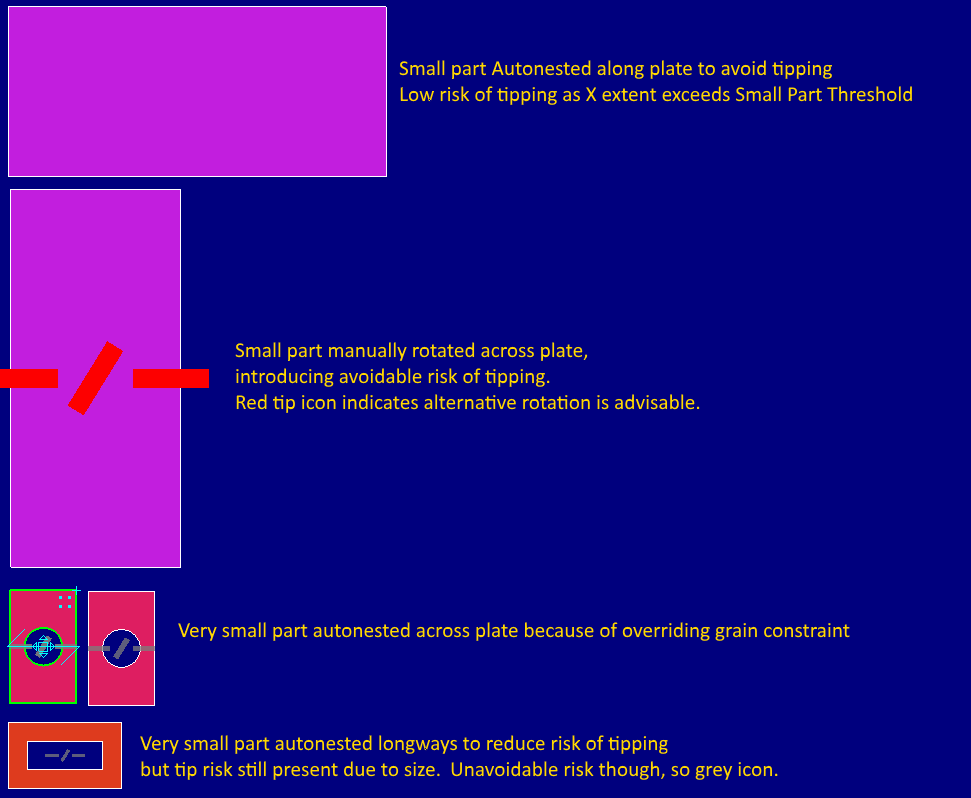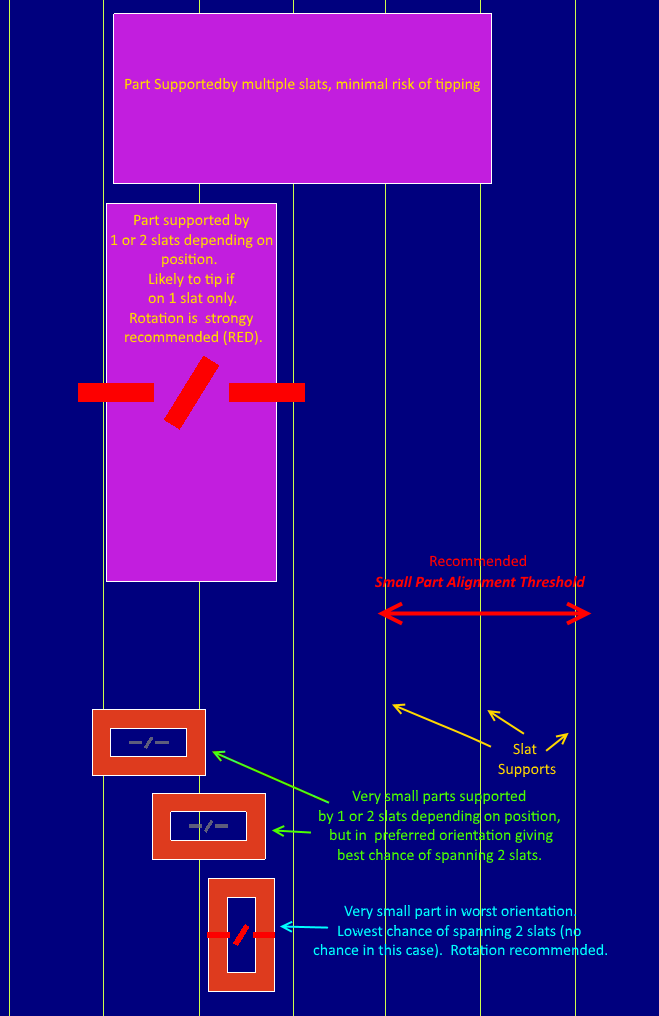Requires PrimecutNE version 4.5.359 or later.
When cutting small parts, there is a chance they will not be “well supported” by the table and will fall or tip, causing a possible torch collision. To mitigate this possibility we can impose an orientation preference (during autonesting only, does not affect manual nesting), such that all parts below a certain size have their autonesting orientations reduced and can only nest lengthways along the machine. (see also Plate Coordinates )

The setting in question is set per machine, and is called Small Part Alignment Threshold.
Note that if Grain Constraint has been applied to the parts it will override this alignment tendency.
This is useful:
1.On machines with slats running “vertically” across the table. A recommended value for these machines is just over twice the slat spacing.
2.On Platedragger style machines, where there may be large slot openings vertically across the table that parts may tip/fall into. A recommended value here is just over twice the widest slot opening in common use.
It is less useful on machines where the plate is supported on an array of pins, and should be set to its default value of 0 on these.
Part Tip Up Hazard Indicators
When autonesting parts will be nested longways when below the threshold size to reduce the risk of tipping. They may still be at risk of tipping however if the long axis extents of the resulting part on the plate is still less than the Small Part Alignment Threshold. Such parts will display a gray tip hazard indicator.
Additionally, manually nested parts may be placed with a rotation across the plate which makes them a high tip risk. The risk may be reduced or eliminated if the part is rotated along the plate. Such parts will show a red tip indicator, suggesting a better placement along the plate is advisable.

EXAMPLE: NESTING OVER SLATS
Typically when nesting we know the slat spacing on the table, but not their exact location relative to where the parts will sit- that depends on how and where the plate is loaded onto the table. Parts nested such that their long axis extent is greater than twice the slat spacing should always be well supported. Parts with a narrow dimension less twice the slat spacing are likely to tip or fall if nested across the table, so we prefer to nest them along the table. Parts small in both dimensions may tip or fall regardless, but are more likely to be better supported if nested longways.
